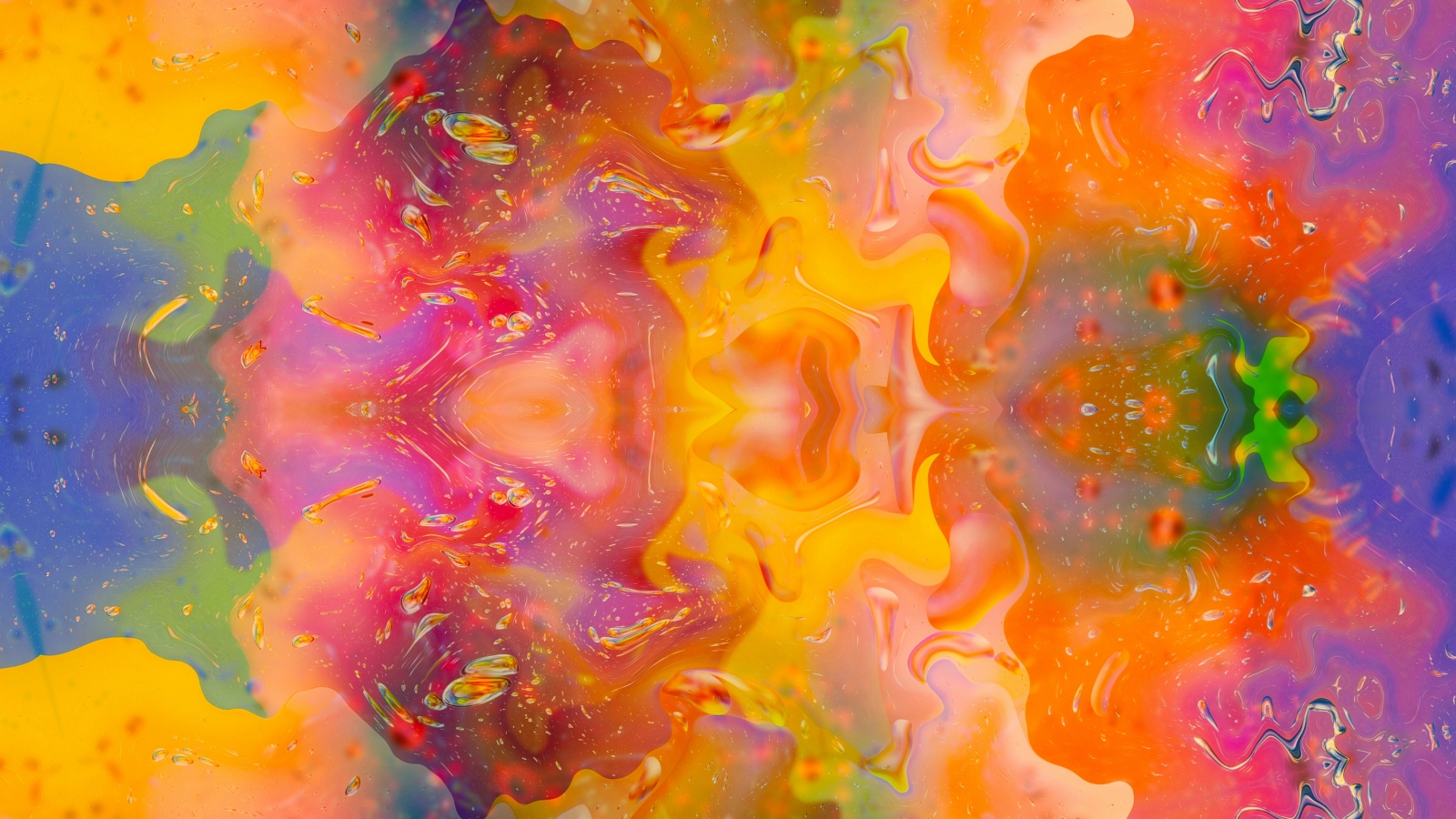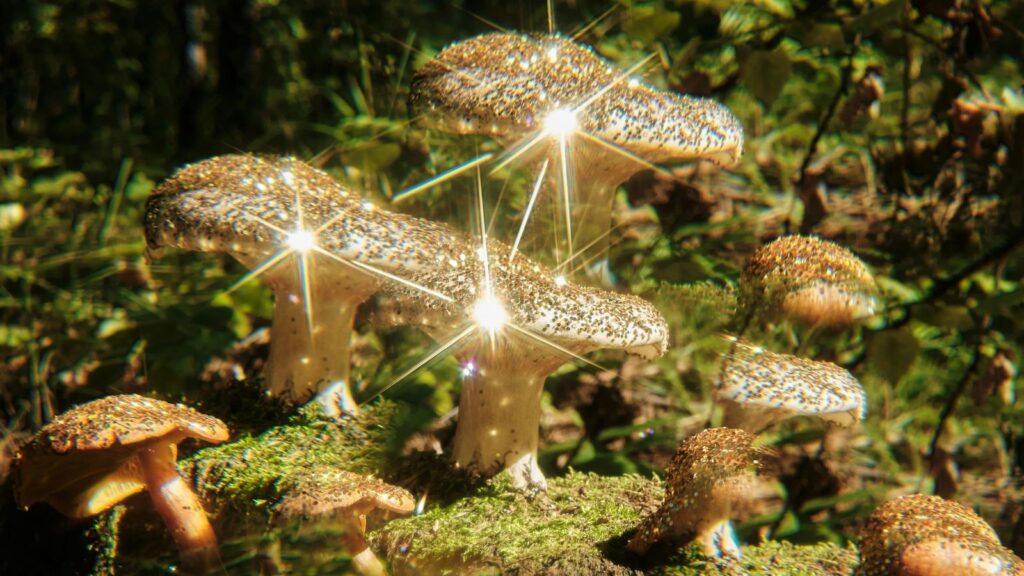For anyone worried about how to pass a drug test, the usual question is ‘how long does weed stay in your system?’ But what about other psychedelic substances? For example, how long does LSD stay in your system? Surely it wouldn’t hang around as long as cannabis, but is it something to worry about if a random drug test is on the horizon?
Learn all about how long an LSD trip lasts, what the potential side effects are, and what kind of factors affect how long LSD stays in your system.
How Long Do LSD Effects Last?
LSD is dosed in micrograms, or ‘ug’ for short. The dose plays a large part in the intensity of the trip, though the method of consumption may not be as significant. Acid can be taken in liquid form, or dropped onto any kind of porous substance, such as certain types of candy or blotter paper. It’s also possible to consume LSD in its pure crystalline form, but it’s more difficult to measure a precise dose. Although there is no standardized dose that is guaranteed to produce the same effects for everyone, consider the following dosage chart as a reference:
- Threshold — 10-20 ug
- Light — 20-75 ug
- Common — 50-100 ug
- Strong — 150-400 ug
- Heavy— 400 or more ug
An acid trip can be summed up in three parts: the come up, the peak, and the comedown. From start to finish, the entire trip lasts anywhere from 6-15 hours, although most trips do not exceed 12 hours. The comedown effects can leave a feeling of “afterglow” or residual bliss for another six hours, and often into the next day.

How Long Does It Take to Feel the Effects?
LSD begins to take effect within 20-90 minutes. During this initial come-up phase, the user begins to feel physical effects that resemble being stoned and may begin to see the edges of items soften and colors can appear brighter. Around the two-hour mark, the trip is fully in motion. Depending on the dose, psychedelic and hallucinatory effects are now present. The peak usually happens between hour three or four, with all effects at their pinnacle. A couple of hours later, the comedown begins, and effects lessen gradually over time.
Potential Side Effects
Perhaps the most intimidating side effect of taking LSD is the potential of having a bad trip. It can happen to anyone, and it is not a pleasant experience. It’s important to remember that it will not last forever and that you will be okay. Before any trip, it’s best to be aware of these harm reduction tips in case a bad trip sneaks up.
Other potential side effects include serotonin syndrome, which may occur if consuming LSD alongside certain prescribed medication. Some research suggests that LSD may trigger the onset of schizophrenia in persons that are predisposed to having the condition. For long-time users or for people who consume massive amounts of LSD, hallucinogen-persisting perception disorder (HPPD) may occur. This can cause flashbacks and visual distortions while sober.
There are also many wonderful side effects such as enhanced creativity, greater ability to feel connected to the world, increased feelings of love, and deeper self-awareness.

How Long Does LSD Stay in Your System?
When wondering how long LSD stays in your system, it’s important to consider what kind of test will be used to determine its presence. Urine, blood, and hair are the most common tests available, and they each have a different threshold for showing up in a laboratory test.
Urine
Urine testing is the most common way to test for LSD. Its metabolites are present in urine for two to four days after last use.
Blood
Blood testing is less common, as it is more invasive and the window of detection is smaller. LSD is present in the blood for only six to 12 hours after last use.
Saliva
This test would need to be administered within three hours of last use and tested in a lab within that time frame. For this reason, saliva testing is very uncommon.
Hair
As with most drugs, traces can be found in hair follicles for up to 90 days. The same is true with LSD.
False Positive Testing
There are many pharmaceutical drugs that can cause a false positive for LSD. Some of those drugs include Zoloft, Trazodone, Bupropion, Dextromethorphan, Diltiazem, Labetalol, and Methylphenidate.

Key Factors That Affect Detection Time
There are many factors that affect detection time. No two bodies are alike, and each of the following plays a role in how quickly LSD is metabolized in the body.
Age
Metabolism slows with age. People over the age of 65 have less blood flow to the kidney and liver — the vital detox organs. Because of this, detoxification can be significantly reduced with age.
Weight & BMI
For people with more fat cells, the metabolites can linger in the body for much longer than something with a lower BMI.
Dosage & Frequency of Use
The more someone consumes and the more often they consume it, the more metabolites will be present in the body.
Activity Levels
Physical exertion activates the metabolic process. Getting in a good sweat helps the body to naturally detoxify.
Hydration Levels
LSD metabolites are excreted through the urine. Levels of hydration can determine how quickly the body is able to flush the metabolites.

How to Detox LSD From Your System
For anyone concerned about a drug test coming up, there are a couple of options that might be suitable. If there is some forewarning, a multi-day cleanse in the form of a detox kit or detox drink is a great way to purge toxins from the body.
For those that simply wish to clear their system of chemicals, the best way to kickstart the detox product is to allow the process to happen naturally, but with a little extra effort to support the body.
Discontinue Use
First and foremost – stop use immediately. Do not take any LSD in any amount whatsoever.
Exercise
Get moving. Go for a run, hit the rock gym, pump some iron. Work up a sweat and kick that metabolism into action.
Stay Hydrated
Drink. More. Water. Clean, pure water is necessary to support detox efforts. Drink up!
Final Thoughts
We hope this answers any questions you may have about how long LSD stays in your system. Hopefully you don’t find yourself in a pinch with an unexpected drug test, and if you do, that you feel prepared to help your body detox faster!
FAQ on How Long LSD Stays in Your System
How long do LSD effects last?
An LSD trip typically consists of three phases: the come up, the peak, and the comedown. The entire trip usually lasts between 6 to 15 hours, with most trips not exceeding 12 hours. Additionally, the comedown effects can leave a residual feeling of “afterglow” or bliss for up to six hours and sometimes into the next day.
How long does it take to feel the effects of LSD?
LSD begins to take effect within 20-90 minutes after ingestion. During the initial phase, physical effects resembling being stoned may be felt, and visual perception may start to change. The peak of the trip usually occurs around the third or fourth hour after ingestion, with psychedelic effects reaching their maximum intensity.
What are the potential side effects of LSD?
The potential side effects of LSD include the risk of having a bad trip, serotonin syndrome (when LSD is consumed alongside certain medications), and the triggering of schizophrenia onset in predisposed individuals. Long-term or heavy use of LSD may lead to hallucinogen-persisting perception disorder (HPPD), causing flashbacks and visual distortions when sober. However, there are also positive side effects such as enhanced creativity, increased feelings of love, and deeper self-awareness.
How long does LSD stay in your system?
The duration of LSD detection in the body depends on the type of test used. In urine, LSD metabolites can be detected for 2-4 days after last use, while in blood, LSD is detectable for only 6-12 hours. Saliva testing, although uncommon, would need to be conducted within three hours of last use. Hair follicle tests can detect LSD for up to 90 days.
What are the key factors that affect detection time of LSD?
Several factors influence how quickly LSD is metabolized in the body, including age, weight and BMI, dosage and frequency of use, activity levels, and hydration levels. Metabolism slows with age, while individuals with more fat cells may retain LSD metabolites for longer periods. Hydration and physical activity can also affect the rate of detoxification.
How can LSD be detoxed from the system?
For individuals facing a drug test, options include multi-day cleanses using detox kits or drinks. Otherwise, allowing the body to naturally detox while supporting the process with exercise and hydration is recommended. Ceasing LSD use immediately, engaging in physical activity to induce sweating, and maintaining proper hydration are essential steps in detoxification.
How does LSD affect the body and mind?
LSD affects the body and mind by binding to serotonin receptors in the brain, leading to alterations in perception, mood, and cognition. It can induce visual hallucinations, altered sense of time, and heightened sensory experiences.
Can LSD cause long-term effects on mental health?
Long-term use of LSD, especially in large doses or frequent consumption, may lead to persistent psychological effects such as anxiety, depression, or psychotic episodes. However, the extent of these effects varies among individuals.
Are there any medical uses for LSD?
Although not commonly used in mainstream medicine, some studies suggest that LSD may have therapeutic potential in treating certain mental health conditions, such as depression, anxiety, and PTSD. However, more research is needed in this area.
Can LSD be detected in a standard workplace drug test?
Standard workplace drug tests typically do not screen for LSD, as it requires specialized testing methods. However, some employers may include LSD in their drug screening panels if they have specific concerns about substance use among employees.
What are the legal implications of LSD use?
LSD is classified as a Schedule I controlled substance in many countries, including the United States, meaning it is illegal to manufacture, distribute, or possess without a license or prescription. Possession or distribution of LSD can result in severe legal consequences, including fines and imprisonment.
How common is LSD use?
The prevalence of LSD use varies depending on geographical location and demographic factors. While it may not be as widespread as other drugs like cannabis or alcohol, LSD use persists among certain subcultures and age groups, particularly among young adults and individuals involved in the music or arts scenes.















